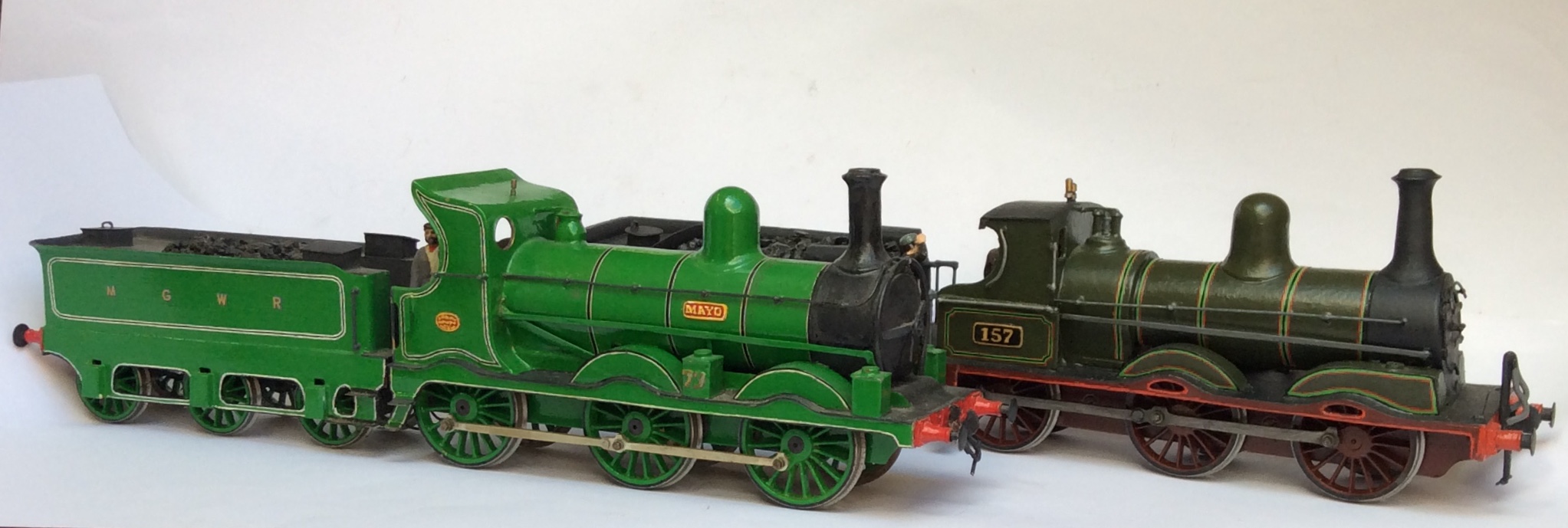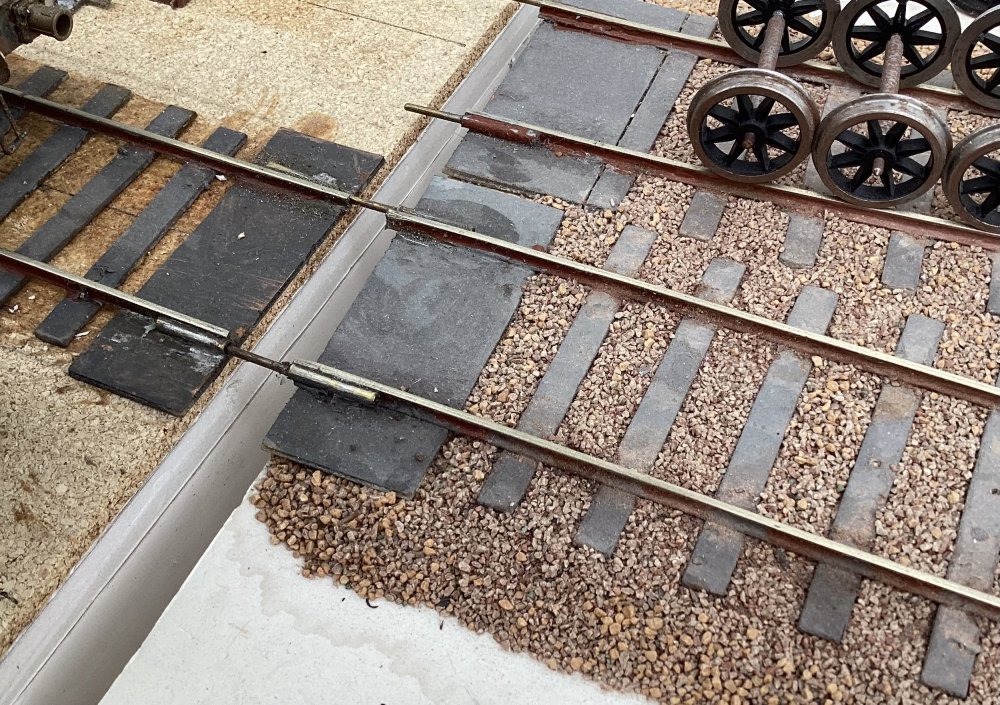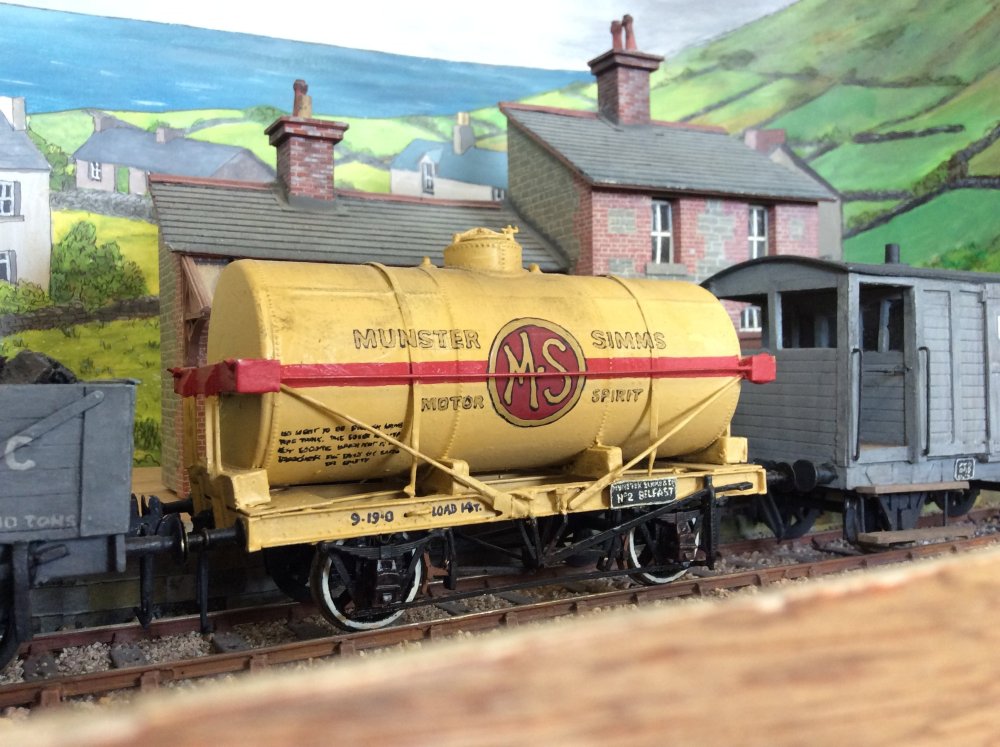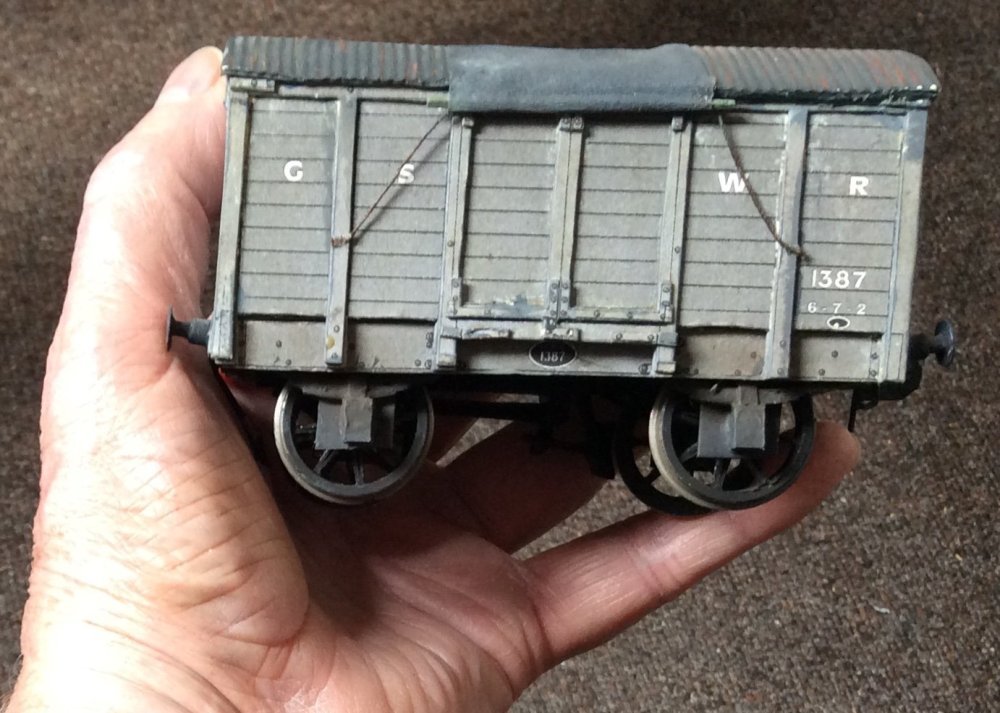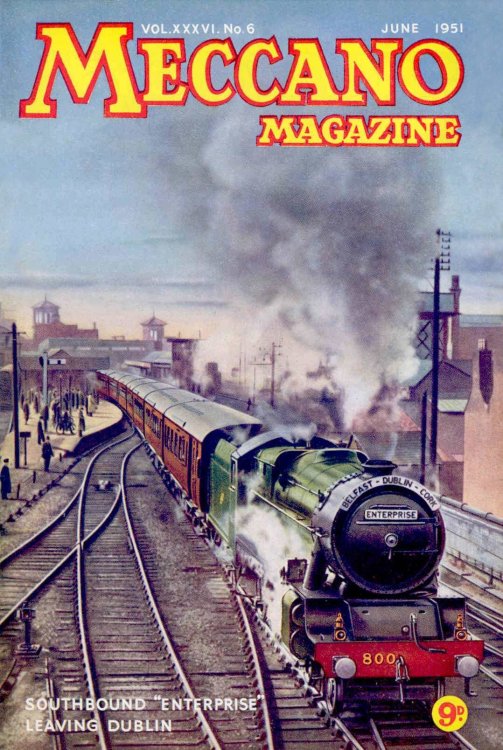-
Posts
323 -
Joined
-
Last visited
-
Days Won
2
Content Type
Profiles
Forums
Events
Gallery
Blogs
Store
Community Map
Everything posted by Northroader
-
I’d be inclined to ditch the right hand crossover, just a straight entry into the back siding from the fiddle yard through just one point out of the loop? On due consideration, you would lose the private siding aspect, so maybe not, perhaps something like Ruyton Road, plus the engine shed? https://www.rmweb.co.uk/forums/topic/154530-ruyton-road-revisited-what-to-do-with-an-old-classic/ sorry, I always think Iain Rice added at least one more point than necessary, now that Whitley could lose a siding, and keep it all compact and less points, and… (why don’t you just shut up, Bob?)
-
And you can get close ups in colour of the old green scheme here.
-
You could get the blue and red on Mark 1s as well. The story goes there was this derailment up Ebbw Vale steel works. Some 100ton bogie oil tanks broke loose and went out of the end of the siding. They were loaded with 3500’ oil which was being warmed up for discharge, and one of the pipes underneath got knocked off, and all the b***** oil ran out and set. When it’s cold it’s thicker than tar, very black and very sticky. There was a blizzard going on, so it got covered in snow. The breakdown gang got the tanks back on the line, by which time oilskins, boots, were completely f*****, and the inside of the two coaches (old bow ends) ruined. so we got two mark ones in the wagon shop, strip out, mess, riding, tool, and packing store conversion. No drawings, you just wing it. To finish off we just painted out the grey upper panels, and did them red, as an arty hand book “the corporate image of BR” said that was the scheme for service vehicles. Once they were seen out and about at Canton the people at Derby Tech centre complained we had taken their livery, and we should have done them plain red, but red and blue was how they stayed.
-
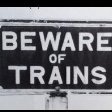
IRCH standard goods vans - wooden framed variant
Northroader replied to Mol_PMB's topic in General Chat
Very good pieces of research, well done. -
Sorry to see Brookhall Mill go, I think it appealed to me for its compact nature, and also you captured a very GNR look to the scene. Also admire your confidence of setting a timetable for your modelling, and on your capable output it looks quite achievable. NCC narrow gauge here we come!
-
No real engineering tolerances here, it’s really what you can lay your hands on at a show. Pick up a bit of rod, or small tube, and slide it in and out of a bigger piece, trying not to have a suggestive leer as you’re doing it, to find a sliding fit, not force. I think the rod in the picture was Slaters .050” brass, and the tube is around 3mm outside diameter, but do check the fit. The rod ends up slighted cocked over, with rounded end, and will transfer the electrics as well, which will simplify the job.
-
I like using cork tiles 3mm thick, a foot square, with an adhesive back. They come from Wickes builders merchants. I think the EU has a thing about cork products, they’re not so common these days. At board joins the track is soldered onto a wide piece of copper clad glass fibre strip, with a securing screw in the middle (where the cladding is filed away.) There’s a thin ply packing strip underneath to make up the level with the cork underlay. If the track is fixed securely at both ends of the board like this, you must allow for expansion due to temperature change along the track, somewhere along its length on the board. The track locates across the join using lengths of brass tube soldered on the outside of the rail web, with a brass rod having a sliding fit in the tube soldered inside the tubes on one side or the other of the join. (there’s no securing screw in the picture, as the track is glued down on a 10mm foamboard baseboard)
-
I would be inclined to hang my hat on the backscene. Those big grey hills shrouded in cloud, a stretch of calm sea, a rocky foreshore with some drystone walls, just like what appears in your photographs. Have that behind, and folks will say that’s Fenit, however you juggle the trackwork. Keep it simple, bare minimum for what you want to operate, don’t worry too much about how long things are on the full size job, and how many sidings there should be.
-
Presume your models are 00, 4mm scale, 16.5mm gauge? Had a look through here for ideas? https://micromodelrailwaydispatch.com (Maybe an Irish take on Portmahomack, issue 3?)
-
So there was this satisfying thump on the front doormat yesterday, and my “New Irish Lines” had come, bang on time. Some of the favourites from IRM, Alan Nixon’s BCDR 2-4-2T, Patrick Davey’s NCC station, and then Tim Cramer bringing out models at the age of 89, very good to see. It’s a great resource from Alan O’Rourke, I really appreciate that you can have free access to all the back issues on line, then when you compare the early publications with todays issue, which could be placed in with the glossy magazines in a W.H.Smiths newsagent rack. Terrific achievement. A reminder that there’s not much happened on the Irish side of things in my model room for far too long. A guy with a clipboard and stopwatch going round would tell me it’s simple, I’m going off in far too many different ways, but it’s all interest and modelling enjoyment. Then I want to have a layout does have the proper Irish gauge, like the two Dave’s, so it’s one more line on top of the standard gauge British and Continental Europe lines I’m doing. This spring has seen me start off on a rebuild of these which should help simplify things, and pull it all together. It was sparked by a competition being announced on the “Microlayout Dispatch”, I’ve mentioned on here before. I’m not a Competition Hound, but thinking it all over, how would I tackle it, trying it out with items of rolling stock, track, and a tape measure, then I got convinced of the possibilities, and knocked up a line. The brief is to design a “tuning fork”, that’s two sidings converging in a point, and on to a headshunt, for a space three square feet. I’m doing it in 0 scale on a board four feet by nine inches. (After the competition I’m thinking of adding extensions of around three inches each end of the running line, which will give just a bit more flexibility) Rather than the usual two goods sidings in an urban setting, I’m thinking of it as a small station on a branch line with a siding, then the pickup goods just exchanges a wagon or two in the siding. its more compact than the terminus to fiddle yard setup, with just one unit, and operating it, you get more of a railway feel, shunting wagons over a point. O.K., it’s really limited for operating otherwise, and the amount of rolling stock needed is very restricted, which can be a good thing. im thinking now of reworking the line I’ve showed on this thread in a similar way, it’s ground to a halt needing more sleeper strip, but the good thing is it’s built out of foamboard, which you can hack about, reshape and re glue with extra supporting blocks, not that the underneath is a pretty sight afterwards. Will it be done by the time the next N.I.L. comes out? Good question…
-
Looks like “Cowans Sheldon ?Co. Limited Carlisle” and a date.
-
To me, that’s all a layout should be, excellent work. Hope to see more of the same, please.
-
I did do a Munster Simms tank wagon a while ago, working off a makers photo published in a HMRS journal, for the 1920s 30s era:
-

Old Goods Wagons with Center Roof Canvas?
Northroader replied to Auto-Train Original's topic in Irish Models
-
Very good job, weathering on my rolling stock I just brush on Humbrol Matt Black but thinned right down with white spirit.
-
A fine model, the outside frames make it really special. The lining is really neatly done. I fancy the green will disappear once it’s weathered, but that’s just how it was.
-
get Into hospital with dehydration, and they’ll give you that much saline drip you can hear the waves lapping inside you. Hope you’re stable now, and able to hold the fort with the family. best wishes, Bob.
-
One thing I found with the kits for something like a 4-4-0, is the number of small parts there are. You can get a few sheets of etched bits and you’ll find it can run into hundreds of small pieces. You can get an accurate model, but it can sorely try your patience working on things like brake work, which can become very fiddly. The smaller loco you pick the better, for an easy start experience.
-
So, your next move would be having the RH extension able to access the goods shed, and do a bit of shunting? I do really like the look of this. It’s a layout, not a diorama.
-
Shouldn’t the snowman have a sash round him when he’s wearing a hat like that? p.s. the flickering fire effect is very effective.
-
That is a terrific model layout, really lovely.
-
Two widths of plastikard strip, built up side by side alternate on a flat surface in a long length, and slightly tilted. Then when it’s hardened off, rub the front face and the back face with a file, and clean the grooves out. Then cut lengths off as needed.
-
I know him: Hans Neesanbumsadaisy.
.png.c363cdf5c3fb7955cd92a55eb6dbbae0.png)
